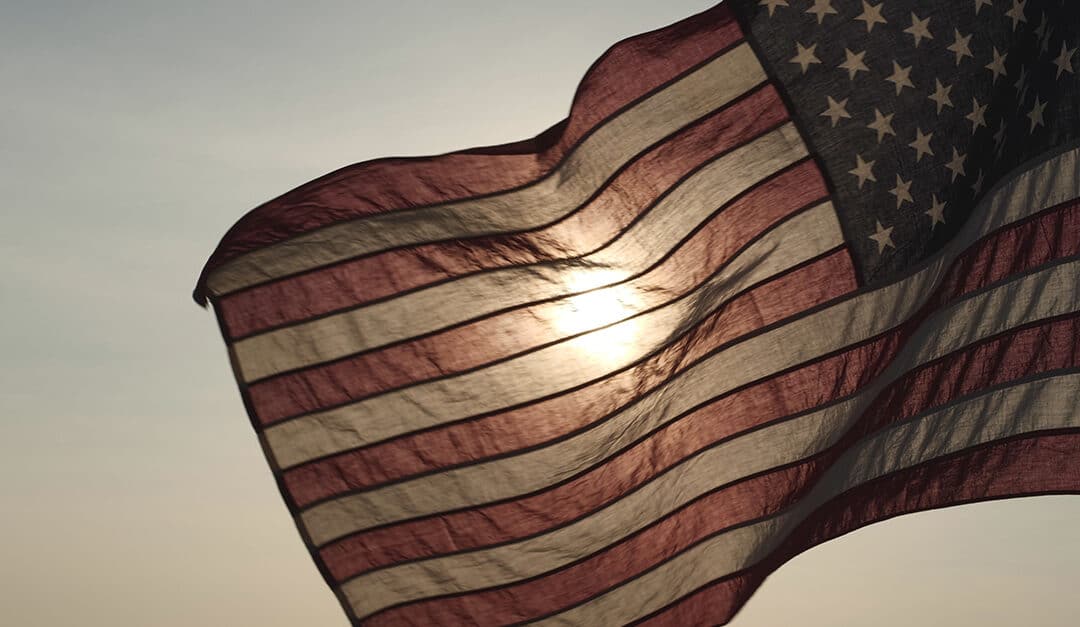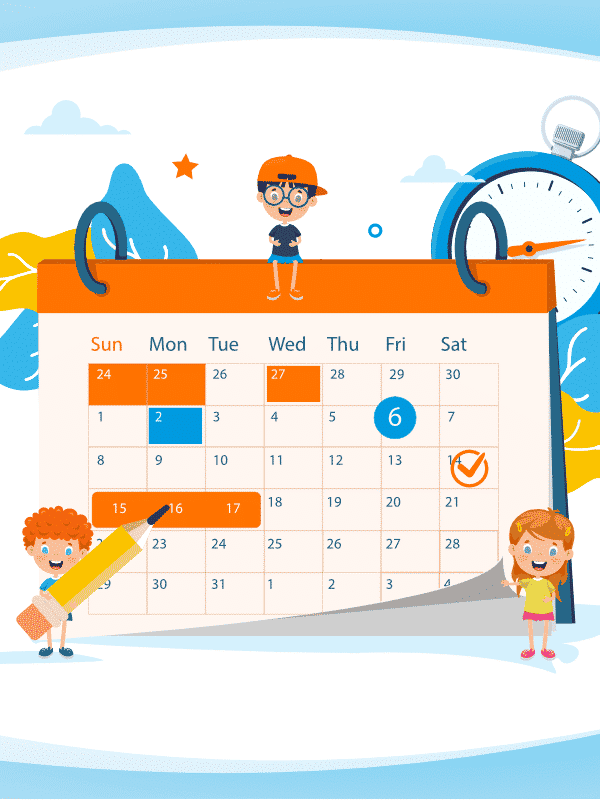Memorial Day is a highly important day to remember, honor and pay tribute to those who’ve passed away serving in the U.S. armed forces. Due to the importance of this day, you’ve probably already taught your kids about it. Or maybe you all even have a loved one in the army, which makes the day even more emotional.
It’s also important that your kids know that no matter the language they’re speaking or where they are, they can still commemorate this day. To help you with that, we made this guide for your Memorial Day in Spanish. Your kids will remember their loved ones in Spanish with a fun craft and some Spanish words and phrases.
Memorial Day History
Memorial Day, commemorated on the last Monday of May, is a highly important day in the U.S. Why? Because it’s made to honor, pay tribute, and remember those who have died while serving in the U.S. armed forces. At first it was known as Decoration Day, because people would decorate the graves with flowers, flags and more.
Before Decoration Day or Memorial Day was declared official, tributes to the fallen had already been paid. For example, in 1866 some women decorated the graves of Confederate and Union soldiers. That same year there was also a ceremony in Waterloo, New York for those who fought in the Civil War.
Later, in 1868, it was stated that May 30th would be Decoration Day, a day to honor those who passed away in the Civil War by decorating their graves. But it was just until after World War I, that it was decided Memorial Day would be commemorated in honor of everyone who passed away in any war. In 1966,
Waterloo was declared the official birthplace of Memorial Day. In 1968 it was declared a federal holiday, and it was decided that now it’d be commemorated on the last Monday of May. This decision went into effect in 1971.
Spanish Words for Memorial Day
- Memorial Day – Día de los Caídos / Día de la Conmemoración de los Caídos
- Veterans – Veteranos
- Army – Ejército
- Armed forces – Fuerzas armadas
- May – Mayo
- Monday – Lunes
- Last – Último
- Military / Militar – Militar
- Soldiers – Soldados
- War – Guerra
- Revolution – Revolución
- Flag – Bandera
- National anthem – Himno nacional
- Navy – Marina
- Marine – Marina
- Marine corps – Cuerpos de Marina
- Heroes – Héroes
- Sacrifice – Sacrificio
- Homeland – Patria
- Patriotic – Patriota
- Patriotism – Patriotismo
- Bravery – Valentía
- Commemoration – Conmemoración
- Honor – Honor
- Tribute – Tributo
- Fallen – Caídos
- Monument – Monumento
- Memorial – Monumento / Monumento conmemorativo
- Cemetery – Cementerio
- Freedom – Libertad
- Flowers – Flores
- Parade – Desfile
- National Memorial Day Parade – Desfile del Día Nacional de los Caídos
- National Memorial Day Concert – Concierto Nacional del Día de los Caídos
- United States of America – Estados Unidos de América
Spanish Verbs for Memorial Day
Here are some verbs related to Memorial Day and all that comes with it. This will come in handy when explaining to your kids about this day. On top of that we’re sure you and your children will use at least some of these verbs when commemorating the day.
- To honor – Honrar
- To commemorate – Conmemorar
- To remember – Recordar
- To defend – Defender
- To protect – Proteger
- To fight – Pelear
- To sacrifice – Sacrificar
- To visit – Visitar
- To dedicate – Dedicar
- To decorate – Decorar
Spanish Phrases for Memorial Day
Here are some phrases and questions your kids can use to have a conversation about Memorial Day. As well as to express feelings surrounding the day and remember a loved one in Spanish.
- Mom, what is Memorial Day about? / Mamá, ¿de qué trata el Día de los Caídos?
- Today at school I learned that Memorial Day honors those who sacrificed their lives to protect us. / Hoy en la escuela aprendí que el Día de los Caídos honra a aquellos que sacrificaron sus vidas para protegernos.
- Memorial Day is commemorated on the last Monday of May. / El Día de los Caídos es conmemorado el último Lunes de Mayo.
- For homework I have to write what Memorial Day means to me, can you help me please, dad? / Como tarea tengo que escribir qué significa para mí El Día de los Caídos, ¿me puedes ayudar por favor, papá?
- I feel sad because I miss aunt Jackie very much, even though I know she defended our country. / Me siento triste porque extraño mucho a la tía Jackie, aunque se que defendió nuestro país.
- On Memorial Day my family and I are going to decorate my aunt’s grave with flowers. / En el Día de la Conmemoración de los Caídos, mi familia y yo vamos a decorar la tumba de mi tía con flores.
- Did you know that my grandpa served in the army? / ¿Sabías que mi abuelo sirvió en el ejército?
- I’d like to make a tribute to commemorate my grandpa’s sacrifice. I loved him very much. / Me gustaría hacer un tributo para conmemorar el sacrificio de mi abuelo. Lo amaba mucho.
- I always remember my grandpa, because he was a hero. / Siempre recuerdo a mi abuelito, porque fue un héroe.
- Are we going to the National Memorial Day Parade to honor the fallen? / ¿Vamos a ir al Desfile del Día Nacional de los Caídos para honrar a los caídos?
- We’re drawing flags to decorate our classroom for Memorial Day. / Estamos dibujando banderas para decorar nuestro salón por el Día de los Caídos.
- This Memorial Day, we’re going to visit the Arlington National Cemetery. / Este Día de los Caídos vamos a visitar el Cementerio Nacional de Arlington.
- Mom, do you remember my great grandpa who fought in the war? Tell me more about him, please. I would’ve liked to know him. / Mamá, ¿recuerdas a mi bisabuelo que peleó en la guerra? Cuéntame más sobre él, por favor. Me hubiera gustado conocerlo.
- Did you know that my teacher’s father was part of the armed forces? He decorates his grave every year on Memorial Day. / ¿Sabías que el padre de mi maestro fue parte de las fuerzas armadas? Él decora su tumba todos los años en el Día de los Caídos.
Memorial Day DIY: Red, White and Blue Wreath
Another great way to teach your kids about Memorial Day in Spanish is by making a craft. So now we’re going to do a Memorial Day wreath with the colors of the U.S. flag. You can decorate your door with it.
What You’ll Need:
- Red, white and blue tissue paper – Papel crepé rojo, blanco y azul
- Big plate – Plato grande
- Small plate or bowl – Plato chico o tazón
- Scissors – Tijeras
- Staple – Engrapadora
- Cardboard – Cartón
- Small rope or cord – Pequeña cuerda o cordón
- Pocket knife – Navaja
- White sheet of paper – Hoja de papel blanca
- Glue – Pegamento
Let’s do the flowers for the wreath!
- Grab the tissue paper of one color (red, white or blue). Then, fold it various times until it forms a square. If the tissue paper is too big, cut it to 8 or 9 inches long and around 5 inches wide, so the flowers will be smaller.
- Then cut one side of the paper, so you get three to five sheets of tissue paper. Don’t separate the sheets of paper.
- Fold those sheets of tissue paper you just cut by doing the accordion folding technique. So, you fold to one side, then to the other, then to the other, and so on until you’ve finished folding the whole paper.
- Once you have the accordion-like tissue paper, put a staple in the middle of it.
- Cut both ends of the accordion tissue paper in half-moon, like a curve. That will make the paper look more like petals when you unfold it.
- Now separate the tissue paper accordion. As you separate it, it will start looking like the petals are blooming until it’s finally a flower.
- Repeat all the steps above with the other colors of tissue paper and with the same color you just did. Do this as many times as you need to get many red, white and blue flowers.
Time for the wreath!
- Draw a big circle on a big cardboard, it can be from a box. You can trace the edge of a big plate to help you do the perfect circle.
- Now draw a smaller circle inside the big circle. For this, you can help yourself by tracing the edge of a small plate or a bowl.
- For the next step, be very careful. With a pocketknife, cut around the perimeter or outline of the small circle. Then cut around the perimeter/outline of the big circle. So now you’re left with two cardboard circles: a small one and a big one. We’ll use the big one; that will be our wreath.
- With the help of the pocketknife make a small hole on what is going to be the top of the cardboard wreath. Pass the rope through the small hole. If you prefer, you can also not do the hole and just tie the rope around what’s going to be the top of the cardboard wreath. Then make a knot with what’s left of the rope, so the rope doesn’t fall.
- It’s finally time to glue the flowers to the wreath! Put some glue on the base of the flowers and stick them to the wreath one by one. You can glue the flowers by mixing them all around the wreath without caring much if the blue one it’s next to the white one or the red one. So all the colors stand out all around the wreath. But that’s just an idea. Honestly, the decoration and order of the colors it’s up to you.
- If you want to add an extra touch, draw some white stars on a sheet of paper. Cut them and glue them on one side of the wreath, on top of the flowers. So they symbolize the stars from the American flag.
- Hang the wreath on your door! Just grab it by the rope and tie it around a nail on your door.
There you go! Now you have your beautiful Memorial Day wreath to commemorate the date. We bet your door looks very patriotic and your kids learned some Spanish along the way.
TruFluency Kids Helps Your Kids Improve their Spanish to Express their Feelings
Like we just saw today, Memorial Day is a very important, but also emotional day. Your kids can learn how to express their feelings during this day by reading some of our vocabulary blogs about feelings in Spanish. We have blogs for different emotions.
Even with all they’ve learned, kids still will need more vocabulary as they advance. As well as practice and other Spanish skills. Like reading, listening, speaking, and grammar. Lucky for you, TruFluency Kids offers all that in our online Spanish immersion classes.
We teach through fun activities, like singing, dancing, cooking and making crafts. So there’s no boring moments in our classes. Everything is taught in a complete Spanish environment; we barely use English. This way students will acquire the language in a natural way.
TruFluency Kids will prepare your kids to express their true feelings in Spanish during this or any other day.


